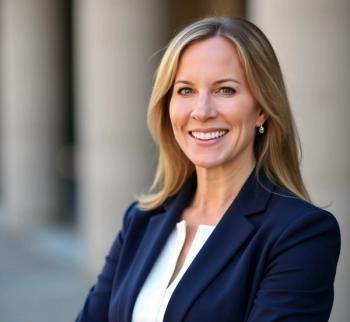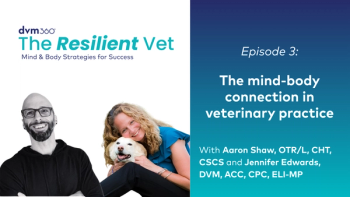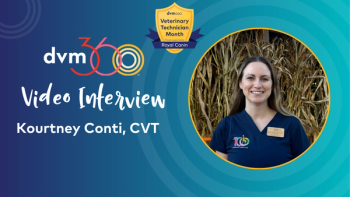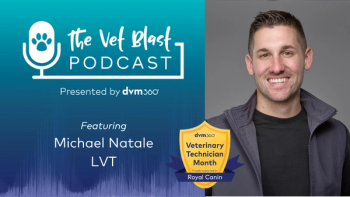
New York City veterinarian takes on pet overpopulation
New York City - A chance encounter between a New York City veterinarian and a wolfhound-mix puppy, hours away from death, was enough to recruit the doctor into a battle to end pet overpopulation.
New York City — A chance encounter between a New York City veterinarian and a wolfhound-mix puppy, hours away from death, was enough to recruit the doctor into the battle to end pet overpopulation.
New York City veterinarian Andrew Kaplan had no intention of adopting Toby in 2001. Afterall, the pooch was labeled aggressive and unadoptable and was scheduled for euthanasia later that day.
“He got under my skin,” Kaplan recalls. “He was not aggressive at all with me, and I somehow convinced them to let me adopt him.”
Even then, Kaplan had no intention of keeping Toby. “I just planned to find him a good home,” he says. “I had another dog at the time. She was 6 or 7 and really didn’t like other dogs. But it turned out she liked Toby. They even shared a bed.”
Kaplan decided to keep Toby. “He has a magical dog quality. So many people say ‘my dog is not good with other dogs,’ but they all like Toby. He’s the best dog I’ll ever have.”
Then, Kaplan began to think about the millions of dogs like Toby who never had a chance at life. And so the idea for The Toby Project was born. This spay/neuter initiative aims to end pet overpopulation in New York City—a problem in the United States that still ranks as the number one killer of dogs and cats.
But to fully understand the project, it is first necessary to take a look at the man behind the dog.
To view a video interview with Dr. Kaplan, press play below:
Kaplan says his love of nature took form very early in life. “I felt the need to protect the oppressed, and animals are everywhere in this category.”
Growing up in a New York City suburb, Kaplan came from what he calls “not an animal family.”
“We had a cat and an unsuccessful dog,” he says, adding the dog was sent to live elsewhere. It was a horse stable across the street from his Staten Island apartment building that sparked 6-year-old Kaplan’s interest.
“That was my first real animal experience,” he says. “I would go over there and play with the kittens and chicks.”
That love of animals took him to Albany State University where he graduated summa cum laude with a bachelor’s degree. He went on to earn his DVM degree in 1990 from Tufts University School of Veterinary Medicine. From there, he spent three years in an internship and medical residency at The Animal Medical Center and then taught for a year at The University of Wisconsin’s School of Veterinary Medicine. He was board certified in internal medicine in 1995.
From there, Kaplan headed to California. “I left because I wanted to live in a beautiful setting,” he says. “I always felt a little guilty about leaving New York City, but I knew I’d come back eventually.”
He did in 2003 and founded City Veterinary Care. The companion-animal veterinary hospital now employs six veterinarians. Two, including Kaplan, are board certified in internal medicine. Each veterinarian sees between 10 and 12 animals a day during half-hour appointments.
“We listen to our clients,” Kaplan says. “I believe very strongly that you can’t do a good job in a shorter time. The client needs to communicate their concerns to you.”
While the practice does cater to dogs and cats, pigeons with broken wings or mice stuck in glue traps are not turned away.
“Our policy is that if an animal makes it through our door, we’ll help it,” Kaplan says. “And, if we’re not qualified to help, we will refer them to a specialist and make a donation to that specialist.”
Not only does Kaplan help the animals that come through the doors at City Veterinary Care, he is also trying to help dogs and cats throughout the city with The Toby Project.
“This is the best legacy I can leave for animals,” he says.
The Toby Project is a non-profit organization offering free and low-cost spay/neuter services primarily to low-income pet owners in New York City, Kaplan says. “This is not a novel idea. It is not a stab in the dark. It works.”
With a mobile surgical van, The Toby Project hit the streets in February 2009. And since then, approximately 5,200 dogs and cats have been spayed and neutered. Unfortunately, Kaplan pointed out, they must spay or neuter 50,000 low-income owned pets for 10 years before there is a drop in shelter populations.
“Adoption is not working. Five to 10 million dogs and cats are killed each year—25,000 a day—in the United States,” he says. “We can go to every shelter and kill all the animals and overpopulation will be gone for one day, but the next day the problem will be back. Prevention solves things,” he says.
With that in mind, the surgical van—Kaplan hopes to add another van within six months—rotates through low-income neighborhoods four days each week.
Staffed with a surgeon, two nurses and a greeter, 15 to 20 animals can be spayed or neutered each day.
Cats, mixed-breed dogs and pit bulls are free, with a minimal fee charged for pure breeds. “It’s a first-come, first-serve basis,” Kaplan says. “We tell people to start lining up at 7 a.m.”
The nurses examine the pets—who must be 5 years old or younger—to make sure they are healthy. Surgeries begin at 9 a.m. and must be finished by 1 p.m. to give the animals two to three hours to recover.
“We send them home to their families that same day with a hotline number for any questions or problems,” Kaplan says. The Toby Project coordinators would like to eventually add four more trucks and move the project to a national level.
“I would like to see this set-up in other communities. Education is so important,” he says. Kaplan also challenged other veterinarians to get involved. “This movement has to be led by professionals. We’re the ones people will listen to,” he says.
“So often I hear veterinarians worried about free services. But these people (low-income) are not seeking services in the first place. Veterinarians have to see that this is not going to impact the economics of their practices.”
Kaplan hopes one day that no dog or cat will be put to death simply because there were not enough homes for them.
“This is a problem we can solve,” he says.
Newsletter
From exam room tips to practice management insights, get trusted veterinary news delivered straight to your inbox—subscribe to dvm360.






